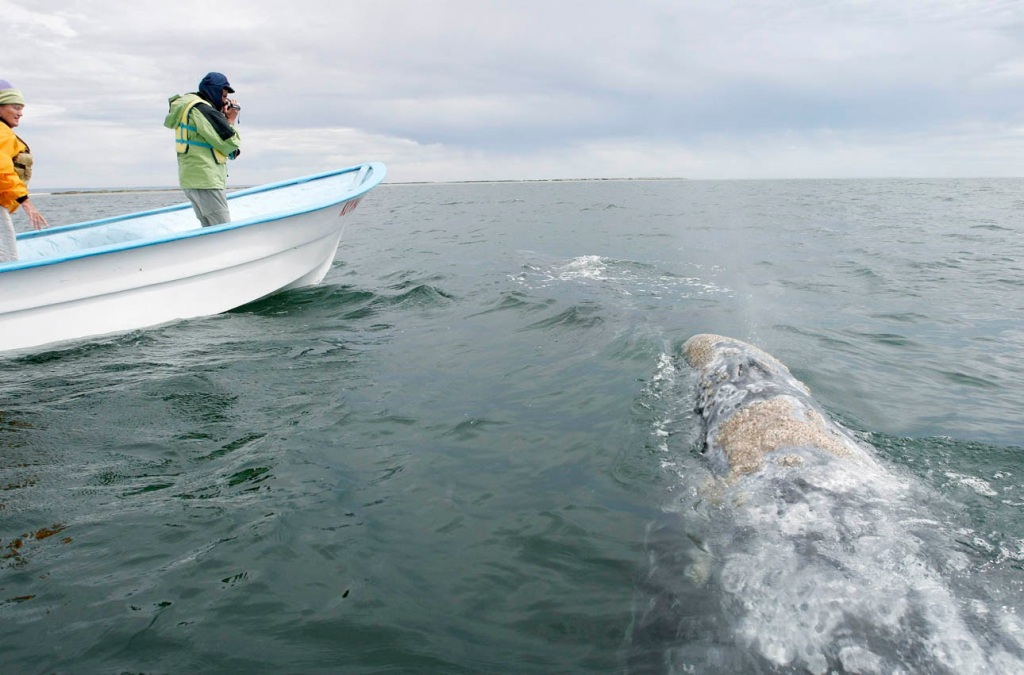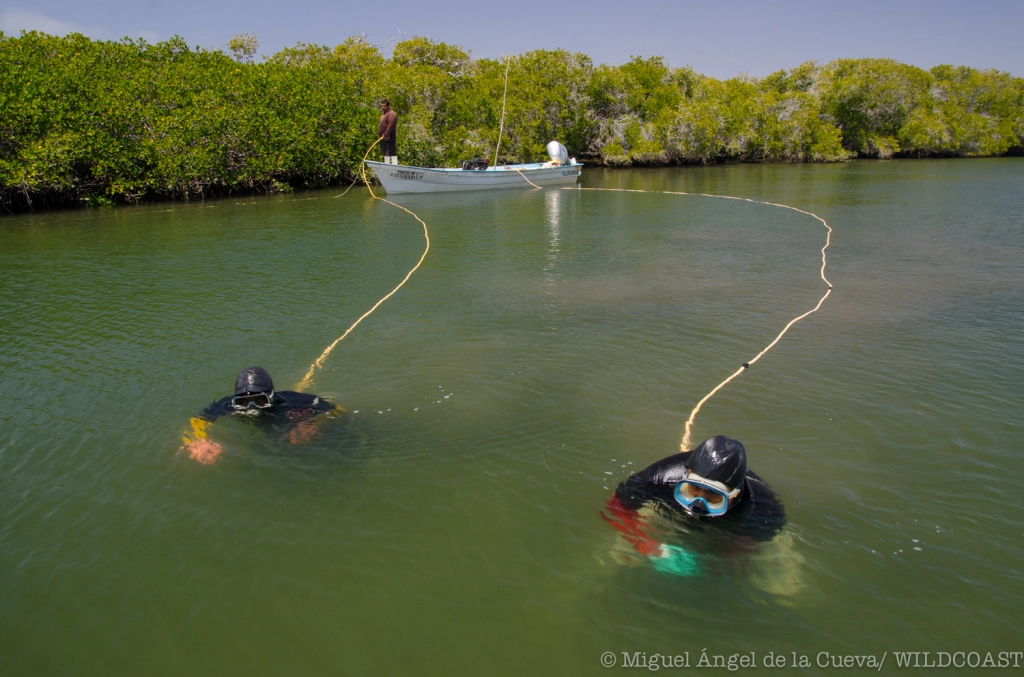
The southern reaches of Laguna San Ignacio in Baja California Sur, Mexico, may be the easiest places on the peninsula to get lost or hopelessly stuck.
Located west of the jutting escarpments, layered peaks, and hidden canyons of the Sierra de Guadalupe are “treacherous sand dunes, salt flats, and mud of a no-man’s land.” Surfers have been passing over these mud, sand, and dusty tracks southward to San Juanico or Scorpion Bay for decades.
“Take the wrong turn and you end up on a 20-mile detour that leads to a salt flat crossing filled with water and mud so thick that even walking is difficult,” I wrote in Saving the Gray Whale back in 2000. In the early 1990s, my wife Emily and I spent a few months living there while carrying out research on gray whale conservation. We got stuck and lost in our 1987 Ford F150 in the Lagoon’s southern salt flats plenty of times.
Today, the gray whale lagoon is part of the 6.2 million-acre federally protected El Vizcaíno Biosphere Reserve, which is also a UNESCO World Heritage site. The remote lagoon is inhabited by salty fishermen and their families, many of whom make their living running whale watching camps during the winter months.

This isolated and wild region is also ground zero for an ambitious and innovative effort to help sequester carbon via mangroves, the aquatic plants that line the wetlands and embayments of the central and southern Baja California peninsula and are found among the tropics.
“The mangroves of Baja are unusual because they are desert mangroves and found in only a handful of regions around the world,” says Tannia Frausto, WILDCOAST Climate Change Manager.

Mangroves are a type of blue carbon ecosystem that sequester atmospheric carbon at a rate five times faster than terrestrial forests while storing up to 50 times more carbon than forests on land. They’re of special interest today as we work to reverse the impacts of the past 100 years of releasing excess carbon into the atmosphere. Our coastal ecosystems are incredibly efficient at removing harmful amounts of carbon from the atmosphere and can store it for thousands of years, making these areas key in the fight against climate change.
“If we are to address climate change, it is imperative that we not only reduce emissions globally. We also have to conserve and restore the natural ecosystems that help us sequester carbon and adapt to climate change. In the case of mangroves, these ecosystems protect shorelines against rising seas levels and dangerous chubasco storm surges as well as sequester carbon,” says Frausto.
With the support of SeaTrees, WILDCOAST is working with women in Laguna San Ignacio to plant 40,000 mangroves over 25 acres of tidal zones, creating a habitat suitable for fish, shellfish, wildlife, and adapting to and mitigating climate change. “Mujeres de El Dátil” are trained in mangrove environmental services, seedlings collection, and planting techniques, as well as monitoring and maintenance of restored sites.
“Our collective efforts in the Lagoon provide a clear model for how we can work at the local and global level to address climate change through natural solutions,” says Frausto
It’s all part of a larger project to protect mangrove forests throughout Mexico. Through legal protection and management, WILDCOAST has helped to conserve 38,336 acres of mangrove forests that store 3.5 million tons of carbon, equivalent to the emissions of 2.8 million cars driven in one year. As Frausto points out, it’s a natural solution to tackling climate change — a piece of the puzzle we can all put together now before it’s too late.
Learn more about WILDCOAST and their plans to expand into other tropical regions. This article orginally appeared in The Inertia.









 During the nesting season, 100,000 olive ridley sea turtles can arrive at Playa Morro Ayuta in Oaxaca to lay their eggs in a single day. – CLAUDIO CONTRERAS KOOB
During the nesting season, 100,000 olive ridley sea turtles can arrive at Playa Morro Ayuta in Oaxaca to lay their eggs in a single day. – CLAUDIO CONTRERAS KOOB Birds of a feather taking advantage of their natural feeding grounds. – CLAUDIO CONTRERAS KOOB
Birds of a feather taking advantage of their natural feeding grounds. – CLAUDIO CONTRERAS KOOB The coral reefs of nearby Huatulco National Park are among the most well preserved in southern Mexico. – CLAUDIO CONTRERAS KOOB
The coral reefs of nearby Huatulco National Park are among the most well preserved in southern Mexico. – CLAUDIO CONTRERAS KOOB The watersheds and tropical forests in the mountains above Barra de la Cruz and Huatulco, Oaxaca help to store water and atmospheric carbon and are critical in the fight against climate change. – MIGUEL ANGEL DE LA CUEVA
The watersheds and tropical forests in the mountains above Barra de la Cruz and Huatulco, Oaxaca help to store water and atmospheric carbon and are critical in the fight against climate change. – MIGUEL ANGEL DE LA CUEVA
